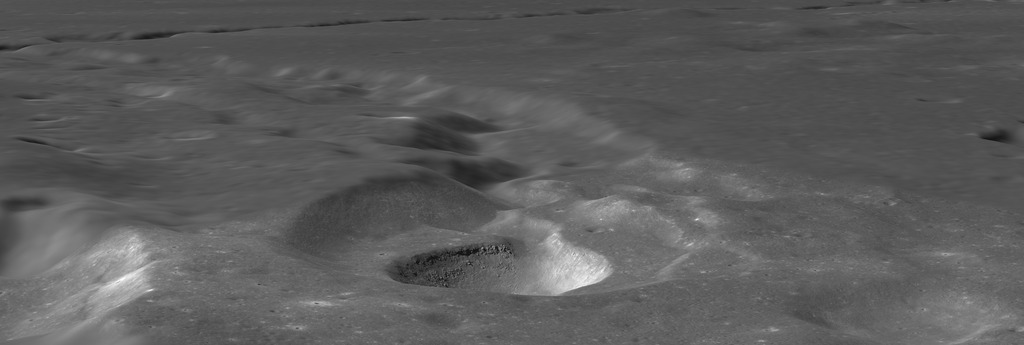Zoom Into the Moon's 'Fire Fountain' Volcano Past with NASA Video

Vast eruptions on the ancient moon may have been larger than those on Earth today, according to a new visualization of a lunar volcanic region's creation.
The video zooms in on Rima Prinz, a channel on the moon that was carved out by a lava flow from a volcanic depression called Vera. This snake-like geographic feature is roughly 50 miles (75 kilometers) long and is located in Oceanus Procellarum, an ancient lava plain about 60 miles (100 km) east of Aristarchus Plateau, a plain with a large crater in it. In the ancient past, eruptions in Vera formed a lake of lava about 1,000 feet (300 meters) deep, according to the NASA video.
"Vera may have formed as a lava lake fed by multiple eruptions of a fire fountain volcano, similar to Mauna Ulu in Hawaii, but vastly larger," NASA officials said in a statement accompanying the video. "Rima Prinz is 100 times deeper, and 10 times longer than, similar channels on Earth."
The visualization came from footage taken by the long-running Lunar Reconnaissance Orbiter Camera (LROC), which captured images at multiple resolutions so that scientists could see the close-up details as well as the geological context for the features. Researchers also incorporated data from LROC's narrow-angle camera images and from its laser altimeter, which measures height.
Geysers of lava were once common on the moon. The moon was likely formed when a Mars-size object crashed into the young Earth. The leftover fragments eventually formed the moon, but the surface was not stable; instead, it was active, with lava fountains erupting regularly on the surface.
Follow Elizabeth Howell @howellspace, or Space.com @Spacedotcom. We're also on Facebook and Google+. Original article on Space.com.
Breaking space news, the latest updates on rocket launches, skywatching events and more!

Elizabeth Howell (she/her), Ph.D., was a staff writer in the spaceflight channel between 2022 and 2024 specializing in Canadian space news. She was contributing writer for Space.com for 10 years from 2012 to 2024. Elizabeth's reporting includes multiple exclusives with the White House, leading world coverage about a lost-and-found space tomato on the International Space Station, witnessing five human spaceflight launches on two continents, flying parabolic, working inside a spacesuit, and participating in a simulated Mars mission. Her latest book, "Why Am I Taller?" (ECW Press, 2022) is co-written with astronaut Dave Williams.
